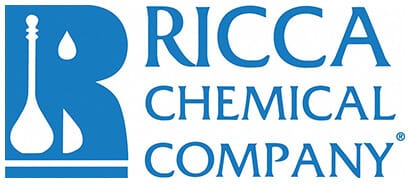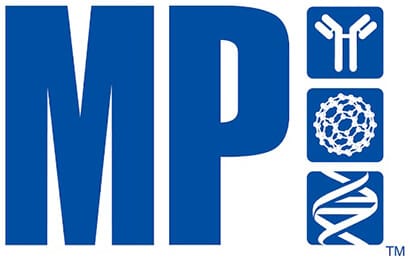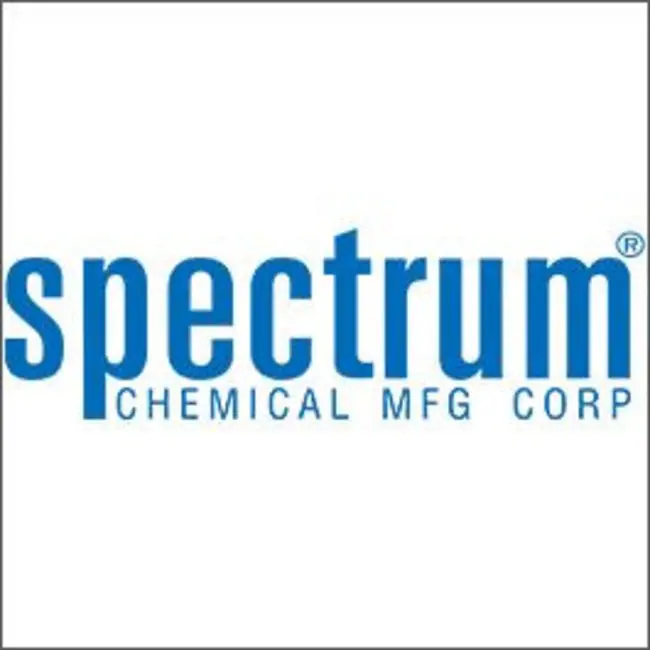Shop
Showing 140101–140150 of 163349 results
-

TCPTP/PTPN2 Rabbit mAb
$103.04 Add to cart View Product DetailsMonoclonal Antibodies
-

TCPTP/PTPN2 Rabbit mAb
$264.04 Add to cart View Product DetailsMonoclonal Antibodies
-
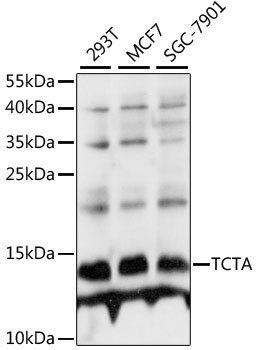
TCTA Rabbit pAb
$86.94 Add to cart View Product DetailsPolyclonal Antibodies
-

TCTA Rabbit pAb
$239.89 Add to cart View Product DetailsPolyclonal Antibodies
-
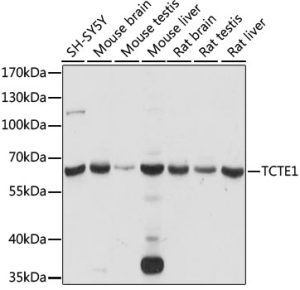
TCTE1 Rabbit pAb
$239.89 Add to cart View Product DetailsPolyclonal Antibodies
-

TCTE1 Rabbit pAb
$86.94 Add to cart View Product DetailsPolyclonal Antibodies
-

TCTN1 Rabbit pAb
$239.89 Add to cart View Product DetailsPolyclonal Antibodies
-

TCTN1 Rabbit pAb
$86.94 Add to cart View Product DetailsPolyclonal Antibodies
-

TCTP/TPT1 Rabbit mAb
$103.04 Add to cart View Product DetailsMonoclonal Antibodies
-

TCTP/TPT1 Rabbit mAb
$264.04 Add to cart View Product DetailsMonoclonal Antibodies
-

TCTP/TPT1 Rabbit pAb
$239.89 Add to cart View Product DetailsPolyclonal Antibodies
-
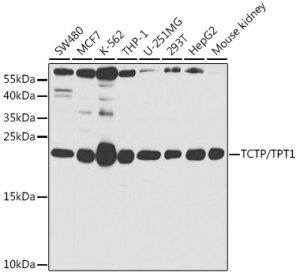
TCTP/TPT1 Rabbit pAb
$239.89 Add to cart View Product DetailsPolyclonal Antibodies
-

TCTP/TPT1 Rabbit pAb
$86.94 Add to cart View Product DetailsPolyclonal Antibodies
-

TCTP/TPT1 Rabbit pAb
$86.94 Add to cart View Product DetailsPolyclonal Antibodies
-

TDE Series -86C Ultralow Freezer, 300 Box Capacity, 115V/60Hz
$17,581.20 Add to cart View Product DetailsTDE Series -86C Ultralow Freezer, 300 Box Capacity, 115V/60Hz
-

TDE Series -86C Ultralow Freezer, 300 Box Capacity, 115V/60Hz, 2 Shelves of Sliding Drawer Racks and 2 in. Boxes
$19,030.20 Add to cart View Product DetailsTDE Series -86C Ultralow Freezer, 300 Box Capacity, 115V/60Hz, 2 Shelves of Sliding Drawer Racks and 2 in. Boxes
-

TDE Series -86C Ultralow Freezer, 300 Box Capacity, 208-230V/60Hz
$17,581.20 Add to cart View Product DetailsTDE Series -86C Ultralow Freezer, 300 Box Capacity, 208-230V/60Hz
-

TDE Series -86C Ultralow Freezer, 300 Box Capacity, 208-230V/60Hz
$19,416.60 Add to cart View Product DetailsTDE Series -86C Ultralow Freezer, 300 Box Capacity, 208-230V/60Hz
-

TDE Series -86C Ultralow Freezer, 300 Box Capacity, 208-230V/60Hz, 2 Shelves of Sliding Drawer Racks and 2 in. Boxes
$19,030.20 Add to cart View Product DetailsTDE Series -86C Ultralow Freezer, 300 Box Capacity, 208-230V/60Hz, 2 Shelves of Sliding Drawer Racks and 2 in. Boxes
-

TDE Series -86C Ultralow Freezer, 300 Box Capacity, 208-230V/60Hz, 2 Shelves of Sliding Drawer Racks and 2 in. Boxes
$20,865.60 Add to cart View Product DetailsTDE Series -86C Ultralow Freezer, 300 Box Capacity, 208-230V/60Hz, 2 Shelves of Sliding Drawer Racks and 2 in. Boxes
-

TDE Series -86C Ultralow Freezer, 400 Box Capacity, 115V/60Hz
$19,223.40 Add to cart View Product DetailsTDE Series -86C Ultralow Freezer, 400 Box Capacity, 115V/60Hz
-

TDE Series -86C Ultralow Freezer, 400 Box Capacity, 115V/60Hz, 2 Shelves of Sliding Drawer Racks and 2 in. Boxes
$20,962.20 Add to cart View Product DetailsTDE Series -86C Ultralow Freezer, 400 Box Capacity, 115V/60Hz, 2 Shelves of Sliding Drawer Racks and 2 in. Boxes
-

TDE Series -86C Ultralow Freezer, 400 Box Capacity, 115V/60Hz, 2 Shelves of Sliding Drawer Racks and 2 in. Boxes, CO2 Backup
$22,894.20 Add to cart View Product DetailsTDE Series -86C Ultralow Freezer, 400 Box Capacity, 115V/60Hz, 2 Shelves of Sliding Drawer Racks and 2 in. Boxes, CO2 Backup
-

TDE Series -86C Ultralow Freezer, 400 Box Capacity, 115V/60Hz, 2 Shelves of Sliding Drawer Racks and 2 in. Boxes, LN2 Backup
$22,894.20 Add to cart View Product DetailsTDE Series -86C Ultralow Freezer, 400 Box Capacity, 115V/60Hz, 2 Shelves of Sliding Drawer Racks and 2 in. Boxes, LN2 Backup
-

TDE Series -86C Ultralow Freezer, 400 Box Capacity, 208-230V/60Hz
$19,223.40 Add to cart View Product DetailsTDE Series -86C Ultralow Freezer, 400 Box Capacity, 208-230V/60Hz
-

TDE Series -86C Ultralow Freezer, 400 Box Capacity, 208-230V/60Hz
$21,155.40 Add to cart View Product DetailsTDE Series -86C Ultralow Freezer, 400 Box Capacity, 208-230V/60Hz
-

TDE Series -86C Ultralow Freezer, 400 Box Capacity, 208-230V/60Hz, 2 Shelves of Sliding Drawer Racks and 2 in. Boxes
$20,962.20 Add to cart View Product DetailsTDE Series -86C Ultralow Freezer, 400 Box Capacity, 208-230V/60Hz, 2 Shelves of Sliding Drawer Racks and 2 in. Boxes
-

TDE Series -86C Ultralow Freezer, 400 Box Capacity, 208-230V/60Hz, 2 Shelves of Sliding Drawer Racks and 2 in. Boxes
$23,087.40 Add to cart View Product DetailsTDE Series -86C Ultralow Freezer, 400 Box Capacity, 208-230V/60Hz, 2 Shelves of Sliding Drawer Racks and 2 in. Boxes
-

TDE Series -86C Ultralow Freezer, 400 Box Capacity, 208-230V/60Hz, 2 Shelves of Sliding Drawer Racks and 2 in. Boxes, CO2 Backup
$22,894.20 Add to cart View Product DetailsTDE Series -86C Ultralow Freezer, 400 Box Capacity, 208-230V/60Hz, 2 Shelves of Sliding Drawer Racks and 2 in. Boxes, CO2 Backup
-

TDE Series -86C Ultralow Freezer, 400 Box Capacity, 208-230V/60Hz, 2 Shelves of Sliding Drawer Racks and 2 in. Boxes, CO2 Backup
$25,116.00 Add to cart View Product DetailsTDE Series -86C Ultralow Freezer, 400 Box Capacity, 208-230V/60Hz, 2 Shelves of Sliding Drawer Racks and 2 in. Boxes, CO2 Backup
-

TDE Series -86C Ultralow Freezer, 400 Box Capacity, 208-230V/60Hz, 2 Shelves of Sliding Drawer Racks and 2 in. Boxes, LN2 Backup
$22,894.20 Add to cart View Product DetailsTDE Series -86C Ultralow Freezer, 400 Box Capacity, 208-230V/60Hz, 2 Shelves of Sliding Drawer Racks and 2 in. Boxes, LN2 Backup
-

TDE Series -86C Ultralow Freezer, 400 Box Capacity, 208-230V/60Hz, 2 Shelves of Sliding Drawer Racks and 2 in. Boxes, LN2 Backup
$25,116.00 Add to cart View Product DetailsTDE Series -86C Ultralow Freezer, 400 Box Capacity, 208-230V/60Hz, 2 Shelves of Sliding Drawer Racks and 2 in. Boxes, LN2 Backup
-

TDE Series -86C Ultralow Freezer, 500 Box Capacity, 115V/60Hz
$21,348.60 Add to cart View Product DetailsTDE Series -86C Ultralow Freezer, 500 Box Capacity, 115V/60Hz
-

TDE Series -86C Ultralow Freezer, 500 Box Capacity, 115V/60Hz, 2 Shelves of Sliding Drawer Racks and 2 in. Boxes
$23,473.80 Add to cart View Product DetailsTDE Series -86C Ultralow Freezer, 500 Box Capacity, 115V/60Hz, 2 Shelves of Sliding Drawer Racks and 2 in. Boxes
-

TDE Series -86C Ultralow Freezer, 500 Box Capacity, 115V/60Hz, 2 Shelves of Sliding Drawer Racks and 2 in. Boxes, CO2 Backup
$25,405.80 Add to cart View Product DetailsTDE Series -86C Ultralow Freezer, 500 Box Capacity, 115V/60Hz, 2 Shelves of Sliding Drawer Racks and 2 in. Boxes, CO2 Backup
-

TDE Series -86C Ultralow Freezer, 500 Box Capacity, 115V/60Hz, 2 Shelves of Sliding Drawer Racks and 2 in. Boxes, LN2 Backup
$25,405.80 Add to cart View Product DetailsTDE Series -86C Ultralow Freezer, 500 Box Capacity, 115V/60Hz, 2 Shelves of Sliding Drawer Racks and 2 in. Boxes, LN2 Backup
-

TDE Series -86C Ultralow Freezer, 500 Box Capacity, 115V/60Hz, 2 Shelves, 2 in. Boxes, Installed Chart Recorder
$24,826.20 Add to cart View Product DetailsTDE Series -86C Ultralow Freezer, 500 Box Capacity, 115V/60Hz, 2 Shelves, 2 in. Boxes, Installed Chart Recorder
-

TDE Series -86C Ultralow Freezer, 500 Box Capacity, 208-230V/60Hz
$21,348.60 Add to cart View Product DetailsTDE Series -86C Ultralow Freezer, 500 Box Capacity, 208-230V/60Hz
-

TDE Series -86C Ultralow Freezer, 500 Box Capacity, 208-230V/60Hz
$23,473.80 Add to cart View Product DetailsTDE Series -86C Ultralow Freezer, 500 Box Capacity, 208-230V/60Hz
-

TDE Series -86C Ultralow Freezer, 500 Box Capacity, 208-230V/60Hz, 2 Shelves of Sliding Drawer Racks and 2 in. Boxes
$23,473.80 Add to cart View Product DetailsTDE Series -86C Ultralow Freezer, 500 Box Capacity, 208-230V/60Hz, 2 Shelves of Sliding Drawer Racks and 2 in. Boxes
-

TDE Series -86C Ultralow Freezer, 500 Box Capacity, 208-230V/60Hz, 2 Shelves of Sliding Drawer Racks and 2 in. Boxes
$25,888.80 Add to cart View Product DetailsTDE Series -86C Ultralow Freezer, 500 Box Capacity, 208-230V/60Hz, 2 Shelves of Sliding Drawer Racks and 2 in. Boxes
-

TDE Series -86C Ultralow Freezer, 500 Box Capacity, 208-230V/60Hz, 2 Shelves of Sliding Drawer Racks and 2 in. Boxes, CO2 Backup
$25,405.80 Add to cart View Product DetailsTDE Series -86C Ultralow Freezer, 500 Box Capacity, 208-230V/60Hz, 2 Shelves of Sliding Drawer Racks and 2 in. Boxes, CO2 Backup
-

TDE Series -86C Ultralow Freezer, 500 Box Capacity, 208-230V/60Hz, 2 Shelves of Sliding Drawer Racks and 2 in. Boxes, CO2 Backup
$27,917.40 Add to cart View Product DetailsTDE Series -86C Ultralow Freezer, 500 Box Capacity, 208-230V/60Hz, 2 Shelves of Sliding Drawer Racks and 2 in. Boxes, CO2 Backup
-

TDE Series -86C Ultralow Freezer, 500 Box Capacity, 208-230V/60Hz, 2 Shelves of Sliding Drawer Racks and 2 in. Boxes, LN2 Backup
$25,405.80 Add to cart View Product DetailsTDE Series -86C Ultralow Freezer, 500 Box Capacity, 208-230V/60Hz, 2 Shelves of Sliding Drawer Racks and 2 in. Boxes, LN2 Backup
-

TDE Series -86C Ultralow Freezer, 500 Box Capacity, 208-230V/60Hz, 2 Shelves of Sliding Drawer Racks and 2 in. Boxes, LN2 Backup
$27,917.40 Add to cart View Product DetailsTDE Series -86C Ultralow Freezer, 500 Box Capacity, 208-230V/60Hz, 2 Shelves of Sliding Drawer Racks and 2 in. Boxes, LN2 Backup
-

TDE Series -86C Ultralow Freezer, 500 Box Capacity, 208-230V/60Hz, 2 Shelves, 2 in. Boxes, Installed Chart Recorder
$24,826.20 Add to cart View Product DetailsTDE Series -86C Ultralow Freezer, 500 Box Capacity, 208-230V/60Hz, 2 Shelves, 2 in. Boxes, Installed Chart Recorder
-

TDE Series -86C Ultralow Freezer, 500 Box Capacity, 208-230V/60Hz, 2 Shelves, 2 in. Boxes, Installed Chart Recorder
$27,434.40 Add to cart View Product DetailsTDE Series -86C Ultralow Freezer, 500 Box Capacity, 208-230V/60Hz, 2 Shelves, 2 in. Boxes, Installed Chart Recorder
-

TDE Series -86C Ultralow Freezer, 600 Box Capacity, 115V/60Hz
$24,150.00 Add to cart View Product DetailsTDE Series -86C Ultralow Freezer, 600 Box Capacity, 115V/60Hz
-

TDE Series -86C Ultralow Freezer, 600 Box Capacity, 115V/60Hz, 2 Shelves of Sliding Drawer Racks and 2 in. Boxes
$26,758.20 Add to cart View Product DetailsTDE Series -86C Ultralow Freezer, 600 Box Capacity, 115V/60Hz, 2 Shelves of Sliding Drawer Racks and 2 in. Boxes
-

TDE Series -86C Ultralow Freezer, 600 Box Capacity, 115V/60Hz, 2 Shelves of Sliding Drawer Racks and 2 in. Boxes, CO2 Backup
$28,593.60 Add to cart View Product DetailsTDE Series -86C Ultralow Freezer, 600 Box Capacity, 115V/60Hz, 2 Shelves of Sliding Drawer Racks and 2 in. Boxes, CO2 Backup


